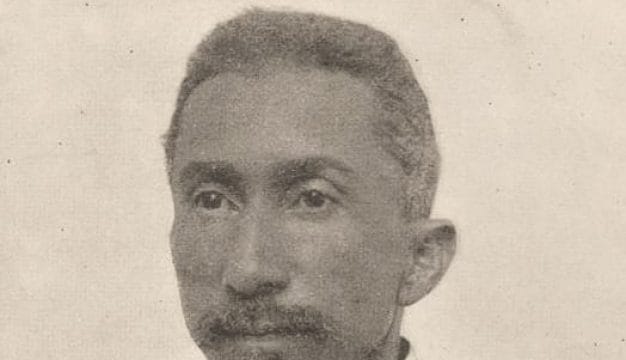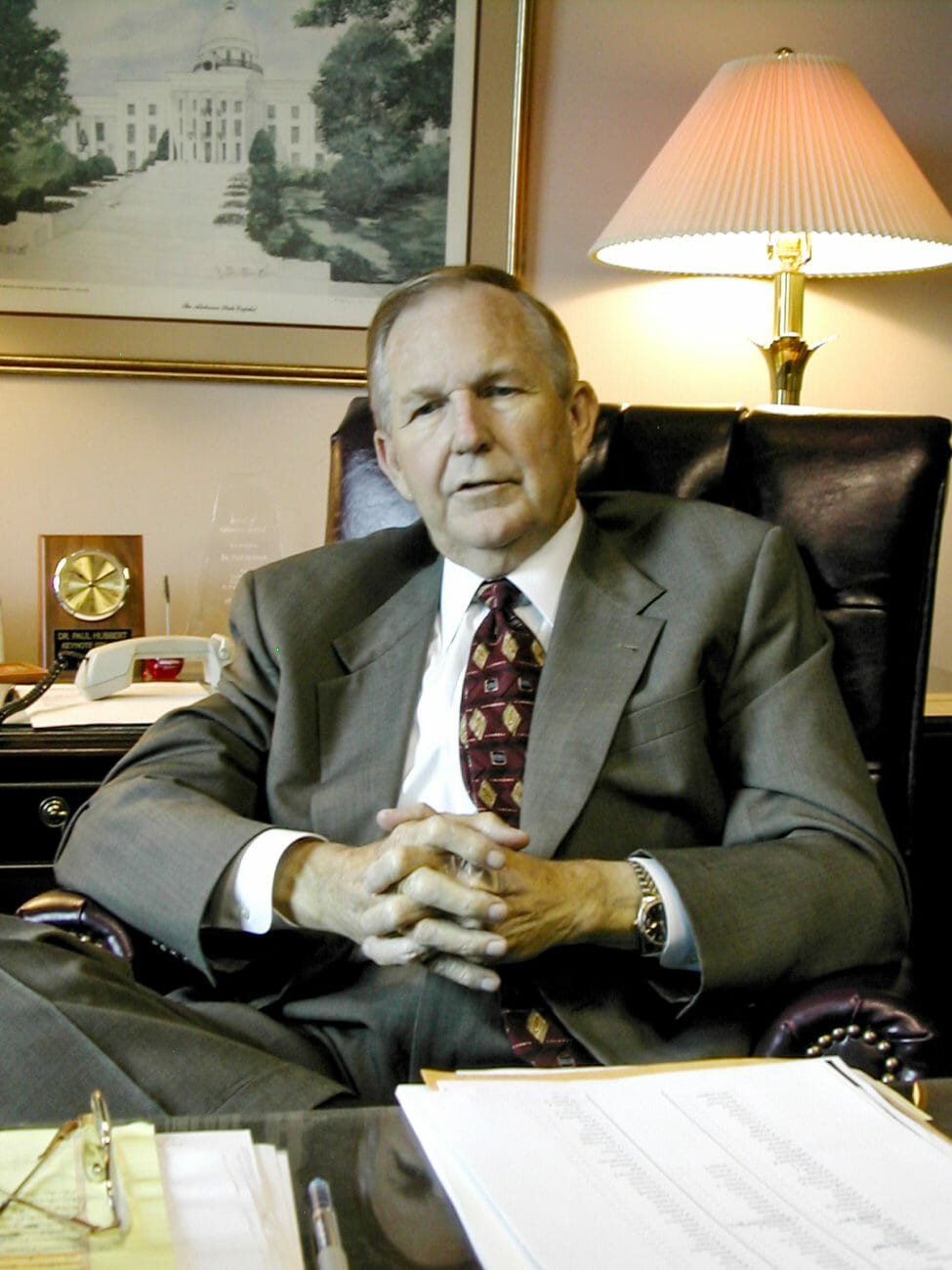Paul R. Hubbert
Walker County native Paul R. Hubbert (1935-2014) served four decades as the head of the Alabama Education Association (AEA), transforming the teacher's organization into one of the most influential organizations in Alabama politics. During his tenure, AEA became one of the most powerful interracial organizations in Alabama after Hubbert oversaw the merger between the all-white AEA with the predominately Black Alabama State Teachers Association (ASTA). Hubbert also shaped the AEA into a quasi-teacher's union that focused its efforts on ensuring that money from the Special Education Trust Fund is spent on Alabama classrooms. The AEA, alongside the state superintendent, is the leading advocate of K-12 education in the state. And as longtime vice-chair of the Alabama Democratic Party, Hubbert was a powerful progressive in Alabama politics who led a strong campaign for the governor’s office against Guy Hunt in 1990 but faltered against Jim Folsom Jr. in 1994.
Hubbert was born on December 25, 1935, to Virgil and Sara Pearl Davis Hubbert. He grew up on a farm in Jasper, Walker County, and attended K-12 Hubbertville School, in Hubbertville, Fayette County, named for his family who were early settlers. During his youth, Hubbert aspired to become a lawyer. He graduated high school in 1954 and then entered Florence State College (present-day University of North Alabama) for his undergraduate degree. In 1958, he married Ann McDonald, with whom he would have two children. Ann was also an educator who would later teach for many years in the Montgomery County school system. After graduating with a teaching certificate in 1959, Hubbert taught economics and American history in Madison County. During this time, he enrolled in graduate school at the University of Alabama, earning a master of science degree in 1962 and doctor of education in school administration and finance in 1964.
In addition to teaching K-12, Hubbert served stints as a business manager for Tuscaloosa City Schools and as the superintendent for Troy City Schools, both of which he helped desegregate. Hubbert was 35 years old when the presidency of AEA opened in early 1969. He initially declined the position to pursue a career teaching education at the University of Alabama, his alma mater. But after then-president of the AEA C. P. Nelson approached Hubbert, he accepted the position, noting that he saw potential in the organization and wanted to cultivate it.
Five months into his tenure at AEA, Hubbert oversaw the finalization of the merger between the AEA and the predominantly Black ASTA, headed by Joe Reed, creating a powerful interracial organization. The merger was driven by the 1964 Civil Rights Act and the National Education Association's response, which required states with dual teacher associations, including the AEA and ASTA in Alabama, to integrate by 1966 or the NEA would withdraw its affiliation. In 1969, Hubbert took the helm of a much larger AEA amidst Gov. George Wallace's fight to preserve segregation in Alabama's school systems. Hubbert consistently fought against Wallace's attempt to divert funding away from public schools. Most notably, in 1971 Wallace aimed to divert millions of dollars from the Education Trust Fund and Retirement Systems of Alabama (which Hubbert chaired for a time) to pay the state's two-year budget (biennium), which had already exceeded $1 billion dollars. In response, Hubbert and Reed galvanized AEA members to march on the Capitol. The successful march prevented Wallace from draining education funding and highlighted the AEA's power under Hubbert's leadership. In 1972, AEA became the first organization in Alabama to form a political action committee (PAC), Alabama Voice of Teachers for Education (A VOTE). As Wallace continued to direct state spending away from public education, Hubbert organized the PAC to fund candidates who stood for public education and the AEA's mission. In 1974, the PAC spent $76,000 to support candidates who were aligned with AEA's mission. By 2010, the PAC would be spending more than $1 million a year on political races.
By the 1990s, Hubbert was a political powerhouse in Alabama. Members of the legislature endearingly referred to him as "Governor," denoting his powerful position amongst colleagues in the Capitol, where he directed votes from its balcony. In 1990, Hubbert ran for governor to capitalize on the gains he created through the AEA and won the Democratic nomination over then-Attorney General Don Siegelman in a run-off with 54 percent to 46 percent. He lost the general election to incumbent Republican Guy Hunt with 48 percent of the vote. Hubbert campaigned for the governorship again in 1994, but ultimately lost in the Democratic primary to Jim Folsom Jr. by a large margin. During the tenure of Gov. Robert "Bob" Riley (2003-11), Hubbert opposed administrative and legislative efforts to steer state funds from the federal government toward charter schools because they took funding away from the public school system and operate like private schools.
As executive secretary of the AEA, the organization would include public education employees in addition to teachers, and Hubbert fought for their salaries, retirement, health care, and insurance as well. He also transformed the organization into one of the most powerful PACs in Alabama. He fought for goals such as the Alabama Reading initiative, which worked to ensure children read at grade-level. The AEA also fought for the Alabama Math, Science, and Technology Initiative, which worked to improve teaching in those areas.
The AEA began to lose influence after Republicans took the majority in the Alabama House and Senate in 2010. That year, Hubbert resigned from his position as secretary of the state Democratic Party. In 2011, he informed the AEA publication Alabama School Journal that he planned to retire from the AEA because of health concerns. Hubbert had had a liver transplant in 1990 and ensuing treatment from the transplant damaged his kidneys. He was succeeded by Henry Mabry, a former state finance director in the Siegelman administration who would have a short and troubled tenure that saw a drop in membership and funding.
Hubbert received several awards and honors during his life. In 2008, he was given the inaugural Paul Hubbert Legacy of Courage Award established by the University of Alabama at Birmingham, which honors people working to improve the lives of those living with liver disease. In 2012, the University of Alabama established the Paul and Ann Hubbert Endowed Scholarship College of Education, with an endowment from the family's estate. In 2013, he was inducted to the inaugural class of the University of Alabama College of Education Educator Hall of Fame.
Hubbert died October 14, 2014, and was buried in Alabama Heritage Cemetery in Montgomery. Such was his stature that his memorial service was held at the Montgomery Center for the Performing Arts.






